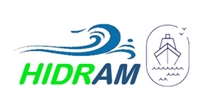Ammonia (NH3) is called to be a CO2-free multipurpose fuel for the maritime sector because it is the main candidate to replace natural gas and diesel as direct fuel for internal combustion engines and, in addition it is one of the systems green H2 storage systems that are more efficient in weight and volume.
Regarding the production of green NH3, from green H2 and N2 extracted from the air, it is not viable for plants with productions lower than 5TmNH/day (5TMD) and it is a continuous process that cannot be stopped forcing to a high degree of storage to guarantee the continuity of the plants.
The HIDRAM Project aims to solve both previous problems and provide the following solutions for the electrification’s ships:
- Synthesis of the NH3 based on catalysts with high yields at low pressures that allow the construction of simple systems (production from 0.1 to 5 Tm/Day) working at low pressure, being also possible discontinuous operation (that can be stopped and started in minutes) to be able to have a direct coupling with renewable generation (wind and solar).
- Use of NH3 in PEM H2 fuel cells through the dissociation of NH3 and the subsequent elimination of non-dissociated NH3, achieving a truly multipurpose PEM cell for the naval sector (comes from battery development for submarines), operating interchangeably with H2 and NH3.
- Use of NH3 in direct NH3 fuel cells (SOFC-H), which constitutes the spearhead of fuel cell technologies in the direction of maximum performance and, again, multipurpose, with H2 and NH3 as fuel.
- Availability of a complete chain of ammonia from a small scale: synthesis and fuel cells for its conversion into electricity, including tanks for storage and supply of H2/NH3 adapted for mobility, in order to assess the feasibility depending on the scale in different cases of use.

